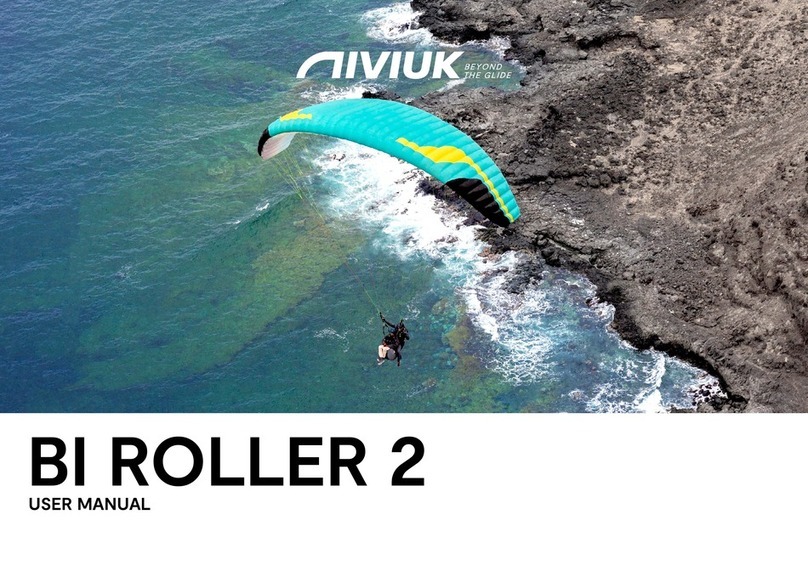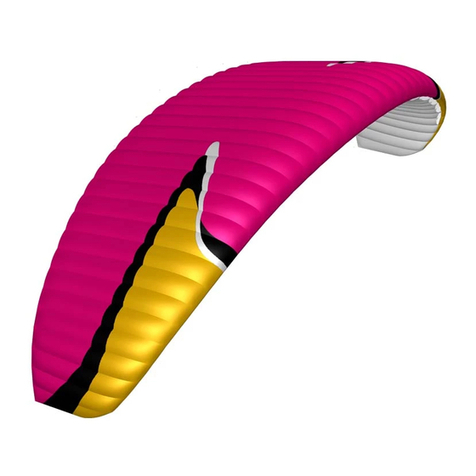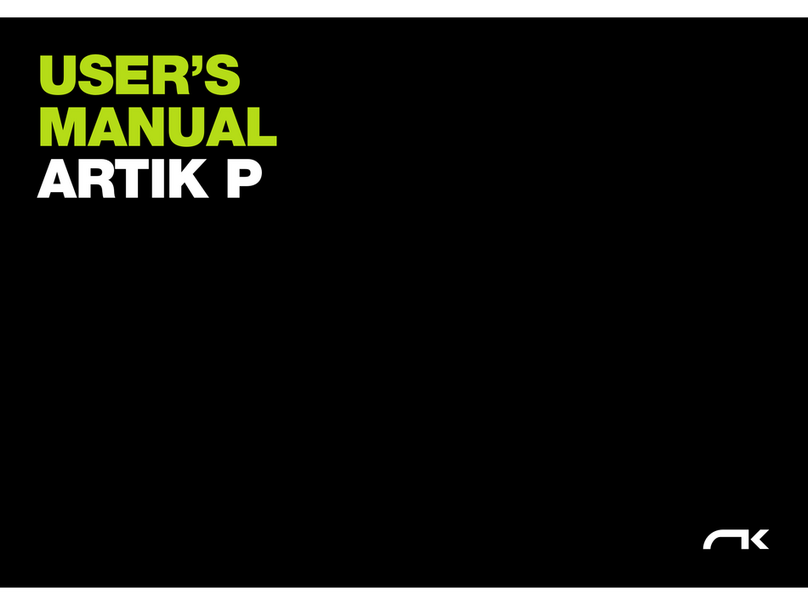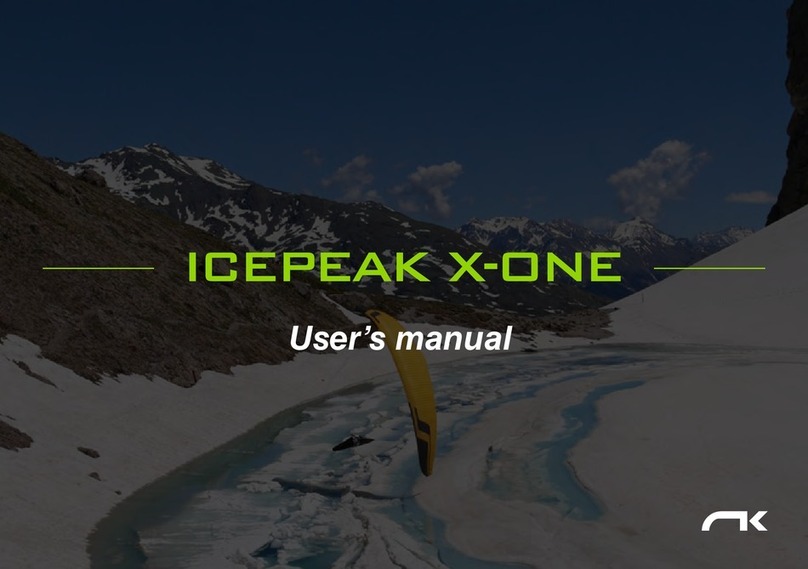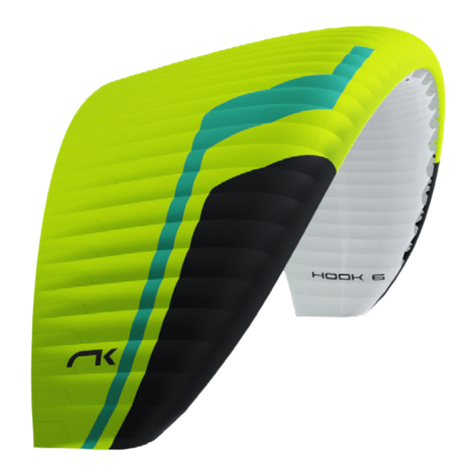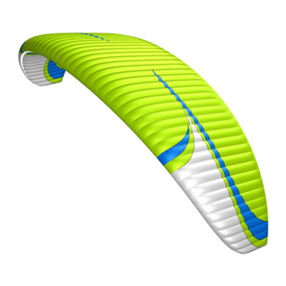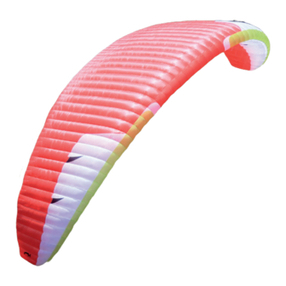
descent method will depend on the particular situation.
To become familiar with the manoeuvres described below, we recommend practising within the environment
rearward and then reposition itself overhead, rocking slightly, depending on how the manoeuvre is done.
important to maintain brake pressure until the glider has returned to its default overhead flying position.
To resume normal flight conditions, progressively and symmetrically release the brake line tension to regain
air speed. When the wing reaches the overhead position, the brakes must be fully released. The wing will
then surge forward to regain full air speed. Do not brake excessively at this moment as the wing needs to
pull both brake handles down to bring the wing back up and release them immediately while the glider is still
in transition to reposition itself overhead.
Cravat
A cravat may happen after an asymmetric collapse, when the end of the wing is trapped between the lines.
Depending on the nature of the tangle, this situation could rapidly cause the wing to spin. The corrective
manoeuvres to use are the same as those applied in case of an asymmetric collapse: control the turn/spin by
applying tension on the opposite brake and weight shift opposite to the turn. Then locate the 3STI stabilo line
the outside position of the B-riser.
possible landing spot, controlling the direction with both weight-shift and the use of the brake opposite to the
may not be possible to continue on the intended flight path.
Over-controlling
unpredicted incidents. We should note that the wrong inputs can lead to loss of control of the glider. The
HOOK 6 P was designed to recover by itself in most cases. Do not try to over-correct it!
Generally speaking, the reactions of the wing, which are caused by too much input, are due to the length of
time the pilot continues to over–control the wing. You have to allow the glider to re-establish normal flying
speed and attitude after any type of incident.
4.3 ACCELERATED FLIGHT
re-establish the air speed after correcting the angle of attack.
It is NOT recommended to accelerate near obstacles or in very turbulent conditions. If necessary, constantly
considered to be ‘active piloting’.
4.4 FLYING WITHOUT BRAKE LINES
If, for any reason at all, the HOOK 6 P’s brake lines become disabled in flight, it will become necessary to pilot
the wing with the C-risers and weight shifting until landing. These risers steer easily because are not under
negative spin. The wing must be flown at full speed (not accelerated) during the landing approach, and the
C-risers will have to be pulled symmetrically all the way down shortly before contact with the ground. This
4.5 LINE KNOT(S) IN FLIGHT
can be undone or try to locate the problem line. Try pulling it to see if the knot can be undone. Beware of
10
